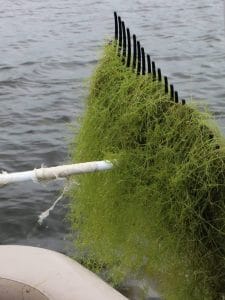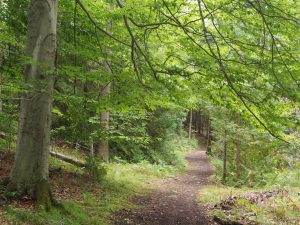Looking ahead to Peterborough and the world of 2038
“The universe is a communion of subjects – not a collection of objects.” Thomas Berry
Here is the reality we face, courtesy of the laws of physics. Scientists have calculated how much more greenhouse gas (GHG) humans can emit before temperatures spill over the critical threshold of 2 C of warming. Above this, unstoppable feedback loops such as melting permafrost are likely to create “Hothouse Earth” conditions, making much of the planet uninhabitable. If emissions continue at current rates, we will reach this threshold in just 20 years. To avoid this disaster scenario, emissions need to peak by 2020 and approach zero by 2050. This will mean cutting global emissions by half every decade. We will also need mass deployment of solar and wind energy, enhancement of carbon-absorbing forests, behavioral changes, technological innovations and transformed social values. Right now, we are nowhere near on track to meet this goal.
In my last two columns (posted at drewmonkman.com), I looked at the many obstacles that thwart action on climate change. This week and next, I’ll consider some possible ways forward. To move ahead, we require an inspiring vision of how Peterborough and the world of could look in two decades.
A hopeful vision
It’s mid-October 2038, and my wife and I have just hobbled onto one of the guided light transit buses that will whisk us from our Little Lake condominium to the beautifully restored Trent Nature Areas. Looking out the bus window, I’m still astounded by how much Peterborough has been transformed.
And, yes, the climate itself has changed more or less as predicted. Spring weather now arrives about a month earlier. This means mosquitoes are already a pest by mid-April, and the pollen and allergy season starts earlier and lasts longer. Mild fall conditions last well into December, and winter as we knew it is a fading memory. Summer is much hotter, too, with about one-third of the days over 30 C. Although severe wind and rainstorms are more frequent, major investments in infrastructure have allowed Peterborough to adapt. In fact, thanks to the massive decarbonization of the planet that began in 2020, most scientists are confident that the Hothouse Earth scenario has been avoided. In fact, the amount of carbon in the atmosphere is actually starting to fall, thanks to new carbon removal technologies. One such technology was developed here at Trent University and used in a plant near Millbrook. Technology has also revolutionized air travel, thanks in part to the use of fuel from biomass. People also fly less.
As the electric bus makes its way north through the downtown – now closed to private automobiles – I admire how landscaping features and the architectural style of both new and renovated buildings reflect our local cultural heritage and ecology. A sense of place permeates the city.
“Human scale” describes the new Peterborough. We have a fully integrated transport system comprised of walkways, cycle paths, and both transit and car lanes. Thanks to compact city development, car ownership is no longer the necessity it once was. In fact, most families now only own one car – electric, of course – or make use of car-sharing. City speed limits have also been lowered and pedestrian zones surround most of our schools
Although the population has doubled, all of the new housing has been provided within the existing city boundaries thanks to the 2019 intensification and redevelopment plan. Residential neighbourhoods are now mixed-use and high density, thanks in part to renovations to single-family homes to create rental units and small businesses. Solar panels and pollinator gardens are everywhere, and the huge investment in shade trees – albeit mostly heat-tolerant southern species – provides much appreciated shade. The best news, however, is that Peterborough’s development model reflects urban living across much of the planet.
How did this revolution happen? If I remember correctly, it went something like this. As climate change and its ripple effects caused more and more developing countries to teeter on the brink of collapse, the tide of refugees overwhelmed much of Europe and North America. A non-stop series of wildfires, hurricanes, droughts, floods, rising sea levels and insect-borne diseases almost bankrupted many countries. In Canada, this led to acceptance of an aggressive nation-wide price on carbon, in which most of the revenue was returned to the citizens. People weren’t necessarily more enamored by big government, but they realized that their very survival depended on a collective response. North Americans came to realize that we can’t live in isolation and that the only way for any country to prosper was through a more egalitarian world. This led to a huge investment in developing countries, many of which had been left behind by our new, high-tech global economy. International tensions were greatly reduced and billions of dollars were saved in military spending.
The many extreme weather events made us realize we can’t be complacent. People began to make noise, realizing we live in a democracy and have the power of our votes and our wallets. The impetus for change came from nearly every quarter: anglers and cottagers were shocked by the degradation of our lakes, plummeting walleye numbers and the proliferation of invasive species; winter sports enthusiasts lamented the disappearance of backyard rinks and the scant and unreliable snow cover; while farmers bemoaned the increasingly frequent droughts and floods.

In this future scenario, climate action was spurred by multiple concerns, including degradation of local lakes. Here we see a new invasive species – Starry Stonewort. Special to Examiner
We also learned to have respectful conversations with people who denied or downplayed the seriousness of climate change. Some say it was a positive backlash to the divisiveness that boiled over during the Trump presidency. By engaging multiple perspectives – including conservative values such as personal responsibility – people began to think differently and seriously engage with what climate science was telling us. All of this has helped to usher in a model of prosperity focussed more on quality of life and deeper respect for the natural world.
We realized that we were all in this together and that only a planet-wide solution could turn things around. Maybe the biggest change has been in how we think about “economy”. We are much more engaged with the idea of assuring the “continuation of all forms of life” on the planet. What happens in the Arctic and in developing countries, for example, affects us here. As Pope Francis said back in 2015, “Nothing is indifferent to us,” be it poverty, famine, homelessness, sexism, racism, species extinction or carbon pollution. Everything eventually comes home to roost.
Despite the loss of jobs from closing the Alberta tarsands and cancelling new pipelines, the huge expansion of renewable energy projects has created millions of jobs planet-wide, including thousands in the Kawarthas. Retrofitting existing houses to make them more energy-efficient has generated enormous employment, too. Many people are also working in habitat restoration and creation. There’s actually a project underway to create a series of connected wetlands in Peterborough. They will not only provide wildlife habitat but also absorb much of the water from the intense rainstorms we now see.
While my wife and I chat about all these changes, she reminds me how much feminine values have permeated society. My daughters tell me, too, how much they were influenced by role models like Rachel Carson, Harriet Tubman, Jane Jacobs, Vandana Shiva, and Christine Blasey Ford. By privileging female perspectives – informed by love, compassion and nurturing – we see greater collaboration across society. The vastly increased number of women in leadership roles in business, science and politics, along with an unleashing of anger by female voters at economic, social and environmental injustices, helped make this happen. Having had a woman mayor in Peterborough for 20 years, along with a majority of councillors either female or of colour, has been a huge difference maker locally.
As the bus passes alongside the Otonabee River with its busy new biking and walking trail, I recall how people began linking climate-friendly behaviour to health, safety, and both clean air and water. This became clear as many of us contracted Lyme disease due to the northward expansion of ticks. People were also alarmed by the increase in mental illness, which health professionals linked to the devastating storms and unprecedented heat waves. We’ve also learned that even a short walk in local green space like the Parkway Green Corridor can make us feel so much better. It’s now common knowledge that regular exposure to nature plays a key role in our physical, mental and spiritual health. This has led to the huge popularity of practises like Forest Therapy.

In the Peterborough of 2038 it is well known that regular exposure to nature contributes to our physical, mental and spiritual health. Photo by Drew Monkman
As we pass the new Patio Restaurant overlooking the river, I’m still amazed that locally-produced food makes up most of our diet and helps the local economy. Both plant-based and cultured meats are now extremely popular. By drastically reducing the consumption of conventional meat, GHGs dropped by 15%. What we’ve learned about animal consciousness and suffering also helped to bring about this change. Hunting, however, remains relatively popular, with little stigma attached to harvesting and eating game. And, yes, we still love fast food but gone are single-use plastic containers, bottles and straws.
Arriving at Trent, we make our way to the fully accessible trails. As a group of students pass by, I reflect on how education has changed, too. The curriculum now embodies Indigenous values such as gratitude and reciprocity towards nature. Teachers act more as “facilitators” and use a problem solving approach. They assist each child to clearly define the issues, analyse patterns and causes, research reliable websites, employ critical thinking skills and choose the best solutions.
I realize that my foray into the future may seem optimistic, but a response of this magnitude is the reality we face.